Interventions for the cessation of non-nutritive sucking habits in children
- PMID: 25825863
- PMCID: PMC8482062
- DOI: 10.1002/14651858.CD008694.pub2
Interventions for the cessation of non-nutritive sucking habits in children
Abstract
Background: Comforting behaviours, such as the use of pacifiers (dummies, soothers), blankets and finger or thumb sucking, are common in babies and young children. These comforting habits, which can be referred to collectively as 'non-nutritive sucking habits' (NNSHs), tend to stop as children get older, under their own impetus or with support from parents and carers. However, if the habit continues whilst the permanent dentition is becoming established, it can contribute to, or cause, development of a malocclusion (abnormal bite). A diverse variety of approaches has been used to help children with stopping a NNSH. These include advice, removal of the comforting object, fitting an orthodontic appliance to interfere with the habit, application of an aversive taste to the digit or behaviour modification techniques. Some of these interventions are easier to apply than others and less disturbing for the child and their parent; some are more applicable to a particular type of habit.
Objectives: The primary objective of the review was to evaluate the effects of different interventions for cessation of NNSHs in children. The secondary objectives were to determine which interventions work most quickly and are the most effective in terms of child and parent- or carer-centred outcomes of least discomfort and psychological distress from the intervention, as well as the dental measures of malocclusion (reduction in anterior open bite, overjet and correction of posterior crossbite) and cost-effectiveness.
Search methods: We searched the following electronic databases: the Cochrane Oral Health Group Trials Register (to 8 October 2014), the Cochrane Central Register of Controlled Trials (CENTRAL) (The Cochrane Library 2014, Issue 9), MEDLINE via OVID (1946 to 8 October 2014), EMBASE via OVID (1980 to 8 October 2014), PsycINFO via OVID (1980 to 8 October 2014) and CINAHL via EBSCO (1937 to 8 October 2014), the US National Institutes of Health Trials Register (Clinical Trials.gov) (to 8 October 2014) and the WHO International Clinical Trials Registry Platform (to 8 October 2014). There were no restrictions regarding language or date of publication in the searches of the electronic databases. We screened reference lists from relevant articles and contacted authors of eligible studies for further information where necessary.
Selection criteria: Randomised or quasi-randomised controlled trials in children with a non-nutritive sucking habit that compared one intervention with another intervention or a no-intervention control group. The primary outcome of interest was cessation of the habit.
Data collection and analysis: We used standard methodological procedures expected by The Cochrane Collaboration. Three review authors were involved in screening the records identified; two undertook data extraction, two assessed risk of bias and two assessed overall quality of the evidence base. Most of the data could not be combined and only one meta-analysis could be carried out.
Main results: We included six trials, which recruited 252 children (aged two and a half to 18 years), but presented follow-up data on only 246 children. Digit sucking was the only NNSH assessed in the studies. Five studies compared single or multiple interventions with a no-intervention or waiting list control group and one study made a head-to-head comparison. All the studies were at high risk of bias due to major limitations in methodology and reporting. There were small numbers of participants in the studies (20 to 38 participants per study) and follow-up times ranged from one to 36 months. Short-term outcomes were observed under one year post intervention and long-term outcomes were observed at one year or more post intervention. Orthodontics appliance (with or without psychological intervention) versus no treatmentTwo trials that assessed this comparison evaluated our primary outcome of cessation of habit. One of the trials evaluated palatal crib and one used a mix of palatal cribs and arches. Both trials were at high risk of bias. The orthodontic appliance was more likely to stop digit sucking than no treatment, whether it was used over the short term (risk ratio (RR) 6.53, 95% confidence interval (CI) 1.67 to 25.53; two trials, 70 participants) or long term (RR 5.81, 95% CI 1.49 to 22.66; one trial, 37 participants) or used in combination with a psychological intervention (RR 6.36, 95% CI 0.97 to 41.96; one trial, 32 participants). Psychological intervention versus no treatmentTwo trials (78 participants) at high risk of bias evaluated positive reinforcement (alone or in combination with gaining the child's co-operation) or negative reinforcement compared with no treatment. Pooling of data showed a statistically significant difference in favour of the psychological interventions in the short term (RR 6.16, 95% CI 1.18 to 32.10; I(2) = 0%). One study, with data from 57 participants, reported on the long-term effect of positive and negative reinforcement on sucking cessation and found a statistically significant difference in favour of the psychological interventions (RR 6.25, 95% CI 1.65 to 23.65). Head-to-head comparisonsOnly one trial demonstrated a clear difference in effectiveness between different active interventions. This trial, which had only 22 participants, found a higher likelihood of cessation of habit with palatal crib than palatal arch (RR 0.13, 95% CI 0.03 to 0.59).
Authors' conclusions: This review found low quality evidence that orthodontic appliances (palatal arch and palatal crib) and psychological interventions (including positive and negative reinforcement) are effective at improving sucking cessation in children. There is very low quality evidence that palatal crib is more effective than palatal arch. This review has highlighted the need for high quality trials evaluating interventions to stop non-nutritive sucking habits to be conducted and the need for a consolidated, standardised approach to reporting outcomes in these trials.
Conflict of interest statement
Felicity RP Borrie: none known David R Bearn: none known Nicola PT Innes: none known Zipporah Iheozor‐Ejiofor: none known
Figures

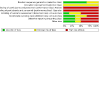


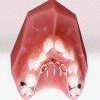

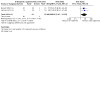
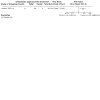
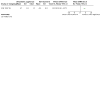

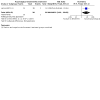
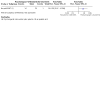
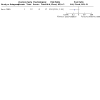

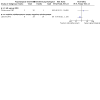

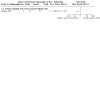
Comment in
-
Insufficient evidence to recommend a treatment to stop non-nutritive sucking habits in children.Evid Based Dent. 2015 Sep;16(3):87. doi: 10.1038/sj.ebd.6401119. Evid Based Dent. 2015. PMID: 26492806 No abstract available.
References
References to studies included in this review
Azrin 1980 {published data only}
-
- Azrin NH, Nunn R, Frantz-Renshaw S. Habit reversal treatment of thumbsucking. Behaviour Research and Therapy 1980;18:395-9. - PubMed
Christensen 1987 {published data only}
-
- Christensen AP, Sanders MR. Habit reversal and differential reinforcement of other behaviour in the treatment of thumb-sucking: an analysis of generalization and side-effects. Journal of Child Psychology and Psychiatry and Allied Disciplines 1987;28(2):281-95. - PubMed
Friman 1990 {published data only}
-
- Friman PC, Leibowitz JM. An effective and acceptable treatment alternative for chronic thumb- and finger-sucking. Journal of Pediatric Psychology 1990;15(1):57-65. - PubMed
Haryett 1967 {published data only}
-
- Haryett RD, Hansen FC, Davidson PO, Sandilands ML. Chronic thumb-sucking: The psychologic effects and the relative effectiveness of various methods of treatment. American Journal of Orthodontics 1967;53(8):569-85. - PubMed
Larsson 1972 {published data only}
-
- Larsson E. Dummy - and finger-sucking habits with special attention to their significance for facial growth and occlusion. Swedish Dental Journal 1972;65:1-5. - PubMed
Villa 1997 {published data only}
-
- Villa NL, Cisneros GJ. Changes in the dentition secondary to palatal crib therapy in digit-suckers: a preliminary study. Pediatric Dentistry 1997;19(5):323-6. - PubMed
References to studies excluded from this review
Adair 1992 {published data only}
-
- Adair SM, Milano M, Dushku JC. Evaluation of the effects of orthodontic pacifiers on the primary dentitions of 24- to 59-month-old children: preliminary study. Pediatric Dentistry 1992;14:13-8. - PubMed
Al‐Emran 2005 {published data only}
-
- Al-Emran S, Al-Jobair A. An assessment of a new reminder therapy technique for ceasing digit sucking habits in children.. Journal of Clinical Pediatric Dentistry 2005;30(1):35-8. - PubMed
Cozza 2006 {published data only}
-
- Cozza P, Baccetti T, Franchi L, McNamara JA. Treatment effects of a modified quad-helix in patients with dentoskeletal open bites. American Journal of Orthodontics and Dentofacial Orthopedics 2006;129:734-9. - PubMed
Cozza 2007 {published data only}
-
- Cozza P, Mucedero M, Baccetti T and Franchi L. Treatment and posttreatment effects of quad-helix/crib therapy of dentoskeletal open bite. Angle Orthodontist 2007;77(4):640-5. - PubMed
Degan 2005 {published data only}
-
- Degan VV, Puppin-Rontani RM. Removal of sucking habits and myofunctional therapy; establishing swallowing and tongue rest position [Remoção de hábitos e terapia miofuncional: restabeleciimento da deglutição e repouso lingual]. PRO-FONO: Revista de Actualizacao Cientifica 2005;17(3):375-82. - PubMed
Friman 1986 {published data only}
-
- Friman P, Barone VJ, Christophersen ER. Aversive taste treatment of finger and thumb sucking. Pediatrics 1986;78(1):174-6. - PubMed
Haryett 1970 {published data only}
-
- Haryett RD, Hansen FC, Davidson PO. Chronic thumb-sucking. A second report on treatment and its psychological effects. American Journal of Orthodontics 1970;57(2):164-78. - PubMed
Woods 1999 {published data only}
-
- Woods DW, Murray LK, Fuqua W, Seif TA, Boyer LJ, Siah A. Comparing the effectiveness of similar and dissimilar competing responses in evaluating the habit reversal treatment for oral-digital habits in children. Journal of Behavior Therapy and Experimental Psychiatry 1999;30:289-300. - PubMed
Additional references
Al‐Jobair 2004
-
- Al-Jobair A, Al-Emran SES. Attitudes of Saudi Arabian mothers towards the digit-sucking habit in children. International Journal of Paediatric Dentistry 2004;14(5):347-54. - PubMed
Baalack 1971
-
- Baalack IB, Frisk AK. Finger-sucking in children. A study of incidence and occlusal conditions. Acta Odontologica Scandinavica 1971;29(5):499-512. - PubMed
Bernstein 1954
-
- Bernstein M. The relation of speech defects and malocclusion. American Journal of Orthodontics 1954;40:149-50.
Bishara 2006
-
- Bishara SE, Warren JJ, Broffitt B, Levy SM. Changes in the prevalence of nonnutritive sucking patterns in the first 8 years of life. American Journal of Orthodontics and Dentofacial Orthopedics 2006;130(1):31-6. - PubMed
Blass 1999
-
- Blass EM, Watt LB. Suckling- and sucrose-induced analgesia in human newborns. Pain 1999;83(3):611-23. - PubMed
Bowden 1966
-
- Bowden BD. A longitudinal study of digital and dummy sucking. Australian Dental Journal 1966;11(3):184-90. - PubMed
Burden 1995
-
- Burden DJ. An investigation of the association of overjet size, lip coverage, and traumatic injury to maxillary incisors. European Journal of Orthodontics 1995;17:513-7. - PubMed
Curtis 2007
Egger 1997
Farsi 1997
-
- Farsi NM, Salama FS. Sucking habits in Saudi children: prevalence, contributing factors and effects on the primary dentition. Pediatric Dentistry 1997;19(1):28-33. - PubMed
Fukuta 1996
-
- Fukuta O, Braham RL, Yokoi K, Kurosu K. Damage to the primary dentition resulting from thumb and finger (digit) sucking. ASDC Journal of Dentistry for Children 1996;63(6):403-7. - PubMed
Glendor 2009
-
- Glendor U. Aetiology and risk factors related to traumatic dental injuries - a review of the literature. Dental Traumatology 2009;25:19-31. - PubMed
Greenlee 2011
-
- Greenlee GM, Huang GJ, Chen SS-H, Chen J, Koepsell T, Hujoel P. Stability of treatment for anterior open-bite malocclusion: A meta-analysis. American Journal of Orthodontics and Dentofacial Orthopedics February 2011;139(2):154-69. - PubMed
Hauck 2005
-
- Hauck FR, Omojokun OO, Siadaty MS. Do pacifiers reduce the risk of sudden infant death syndrome? A meta-analysis. Pediatrics 2005;116(5):e716-23. - PubMed
Higgins 2011
-
- Higgins JPT, Green S (editors). Cochrane Handbook for Systematic Reviews of Interventions Version 5.1.0 [updated March 2011]. The Cochrane Collaboration, 2011. Available from www.cochrane-handbook.org.
Laine 1987
-
- Laine T, Jaroma M, Linnasalo AL. Relationships between interincisal occlusion and articulatory components of speech. Folia Phoniatrica 1987;39(2):78-86. - PubMed
Larsson 2001
-
- Larsson E. Sucking, chewing, and feeding habits and the development of crossbite: a longitudinal study of girls from birth to 3 years of age. Angle Orthodontist 2001;71(2):116-9. - PubMed
Li 2006
Mistry 2010
-
- Mistry P, Moles DR, O'Neil J, Noar J. The occlusal effects of digit sucking habits amongst school children in Northamptonshire (UK). Journal of Orthodontics 2010;37:87-92. - PubMed
Modeer 1982
-
- Modder T, Odenrick L, Lindner A. Sucking habits and their relation to posterior cross-bite in 4-year-old children. Scandinavian Journal of Dental Research 1982;90(4):323-8. - PubMed
Norton 2012
-
- Norton E, O'Connell AC. Traumatic dental injuries and their association with malocclusion in the primary dentition of Irish children. Dental Traumatology 2012;28:81-6. - PubMed
Ogaard 1994
-
- Ogaard B, Larsson E, Lindsten R. The effect of sucking habits, cohort, sex, intercanine arch widths, and breast or bottle feeding on posterior crossbite in Norwegian and Swedish 3-year-old children. American Journal of Orthodontics and Dentofacial Orthopedics 1994;106(2):161-6. - PubMed
Patel 2008
-
- Patel A. Digit sucking habits in children resident in Kettering (UK). Journal of Orthodontics 2008;35:255-61. - PubMed
Petren 2008
-
- Petren S, Bondemark L. Correction of unilateral posterior crossbite in the mixed dentition: a randomized controlled trial. American Journal of Orthodontics and Dentofacial Orthopedics 2008;133(6):790.e7-13. - PubMed
Proffit 2013
-
- Proffit WR, Fields HW, Sarver DM, Ackerman JL. Chapter 11 Moderate nonskeletal problems in preadolescent children. In: Contemporary Orthodontics. 5th edition. St Louis: Elsevier, 2013:413-6.
Reid 1984
-
- Reid DA, Price AH. Digital deformities and dental malocclusion due to finger sucking. British Journal of Plastic Surgery 1984;37(4):445-52. - PubMed
Sandler 2011
-
- Sandler PJ, Madahar AK, Murray A. Anterior open bite: aetiology and management. Dental Update October 2011;38(8):522-32. - PubMed
Schulz 2010
Singh 2008
-
- Singh SP, Utreja A, Chawla HS. Distribution of malocclusion types among thumb suckers seeking orthodontic treatment. Journal of Indian Society of Pedodontics and Preventive Dentistry 2008;26 Suppl 3:S114-7. - PubMed
Svedmyr 1979
-
- Svedmyr B. Dummy sucking. A study of its prevalence, duration and malocclusion consequences. Swedish Dental Journal 1979;3(6):205-10. - PubMed
Vazquez‐Nava 2006
-
- Vazquez-Nava F, Quezada-Castillo JA, Oviedo-Trevino S, Saldivar-Gonzalez AH, Sanchez-Nuncio HR, Beltran-Guzman FJ, et al. Association between allergic rhinitis, bottle feeding, non-nutritive sucking habits, and malocclusion in the primary dentition. Archives of Disease in Childhood 2006;91(10):836-40. - PMC - PubMed
Warren 2002
-
- Warren JJ, Bishara SE. Duration of nutritive and nonnutritive sucking behaviors and their effects on the dental arches in the primary dentition. American Journal of Orthodontics and Dentofacial Orthopedics 2002;121(4):347-56. - PubMed
Publication types
MeSH terms
LinkOut - more resources
Full Text Sources

